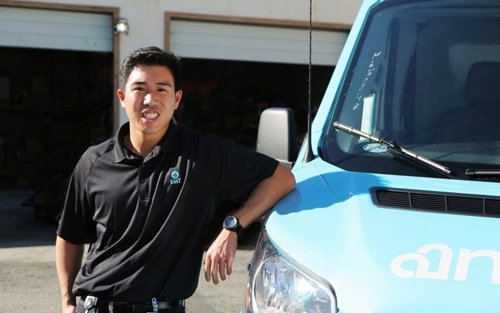By: Stan Vashovsky, Ambulnz CEO
We are scarcely into the new year and are already seeing a national debate over the future of healthcare as the U.S. Congress and the incoming presidential administration consider changes to the Affordable Care Act.
Just as the passage and implementation of the ACA caused waves of change that directly impacted our industry, I am sure any changes to the act will have additional repercussions.
In the face of this uncertainty, my wish is that 2017 becomes the year our industry makes some real progress in delivering the innovation needed to improve patient care, as well as customer service for our caregivers and opportunities for our EMTs.
We can’t wait for changes to come our way from the halls of government. No matter where you are in the political spectrum, as an industry, we need to stay focused and stay positive, and most importantly remain dedicated to always improving patient care even in the face of broader policy changes.
This uncertainty is nothing new for our industry, which has endured decades of changes and regulatory upheavals. Many of those previous changes were challenging but never to the point that they crippled our industry or forced wholesale transformation.
“More than 125 million Americans experience at least one chronic, and 75 million have two or more..."
-The U.S. Department of Health & Human Services
What we need to remember is that everyone agrees with the long-term goals of any healthcare reform – to improve patient care and provide affordable coverage to as many people as possible. And any change that comes our way will certainly continue to support the move toward managed care, which attempts to control healthcare costs, in part, by focusing on preventative care and chronic disease management.
More than 125 million Americans experience at least one chronic illness, and 75 million have two or more, according to the U.S. Department of Health and Human Services. Chronic medical conditions such as cardiac disease, chronic obstructive pulmonary disease and diabetes account for more than 75 percent of total healthcare spending.
A typical patient with multiple chronic medical conditions cycles in and out of the hospital and the emergency department and regularly sees multiple medical specialists – all of which creates a greater need for ambulance services.
I don’t see this trend reversing anytime soon. The surge in the number of patients covered for non-emergency medical transportation under the ACA’s expansion of Medicaid was only the beginning. So, no matter who sits in the White House or what party controls congress, we have a growing burden and responsibility to provide quality care for an increasing number of patients.
And if that’s the case, one thing is very clear: doing business the way we have for decades will not suffice. We simply MUST innovate to keep up with the needs of our growing patient population, to help alleviate the administrative burden on our caregiver customers, and to enable EMTs to deliver the best care possible while building real careers in the ambulance service.
The good news is that we have the technology to accomplish all of this. The question is whether we have the vision and commitment to make the necessary changes that can revolutionize our industry, and to do so without disrupting service to our patients.
I believe we do. In fact, as Ambulnz embarks on its second full year of operation, I am more optimistic than ever that our industry is not only ready to adapt, but to drive the transformation. I’ve met so many EMTs who have stepped up to proactively take on a new way of working and I’ve talked with many caregivers who are eager to embrace new technology that makes their lives easier.
We live in an interesting time, and 2017 is shaping up to be no less challenging in all sorts of ways, but if we stay focused on our patient care mission while working together to deliver tangible change that our industry needs, then I believe this will be a landmark year for ambulance services.






